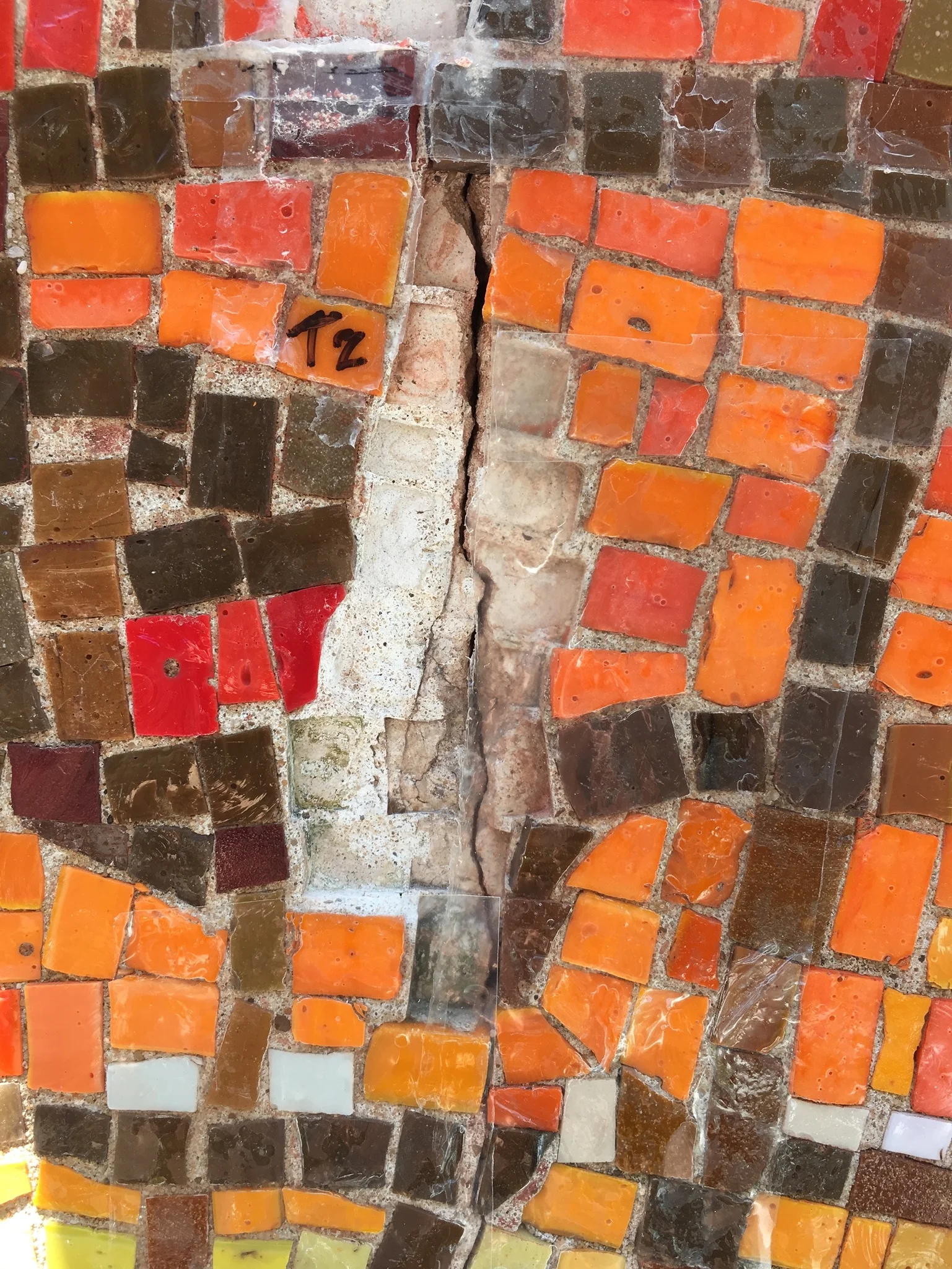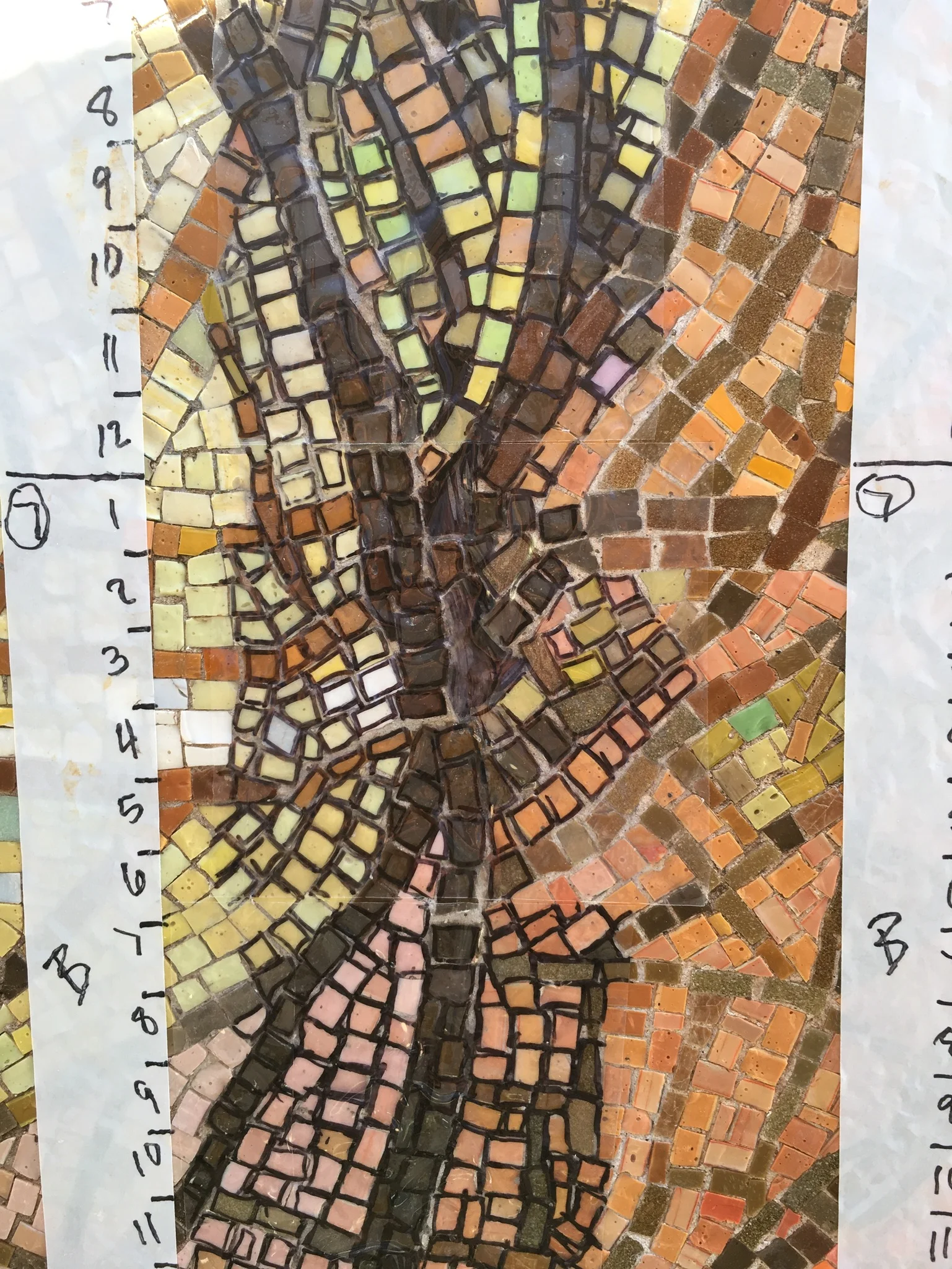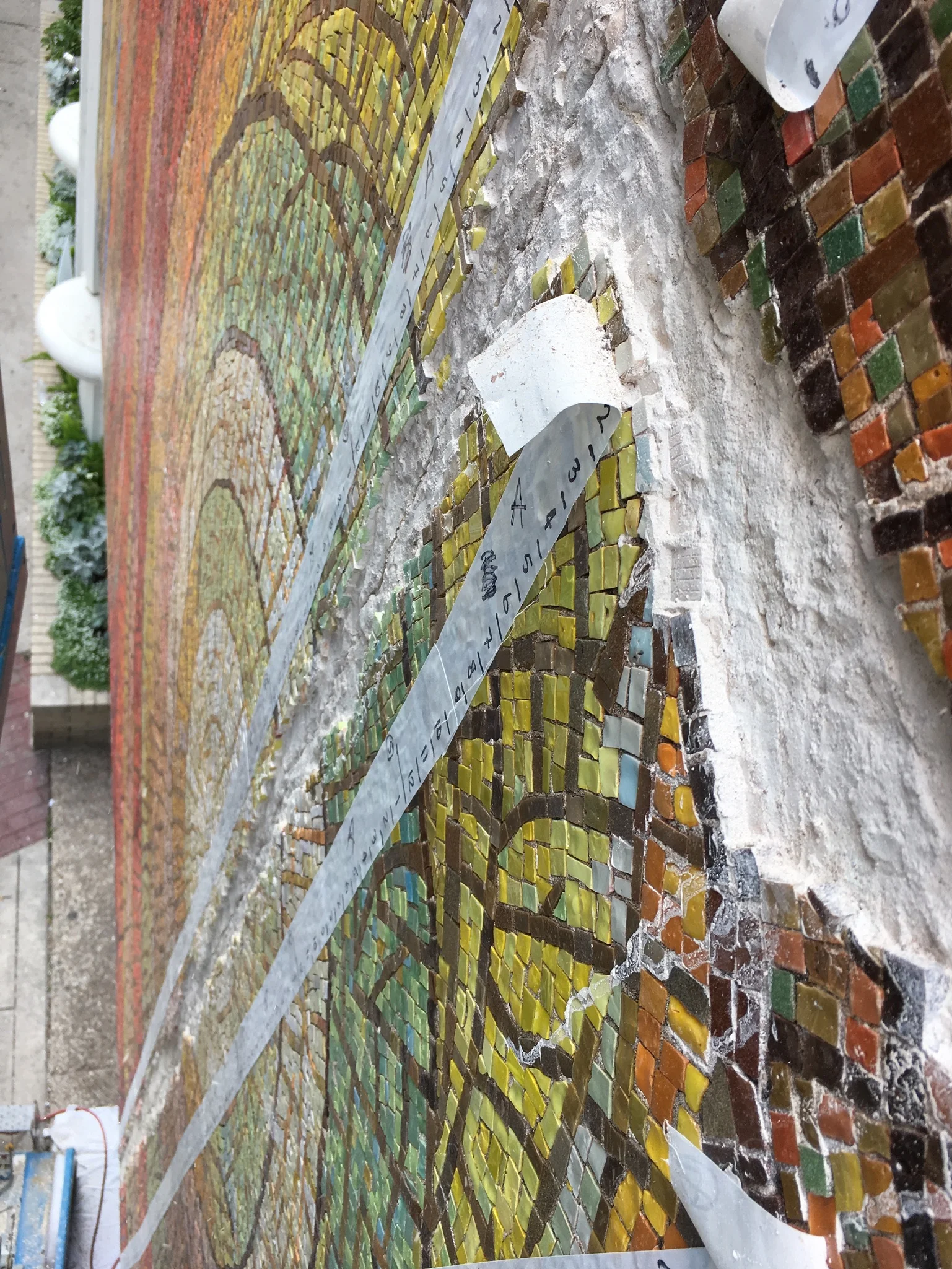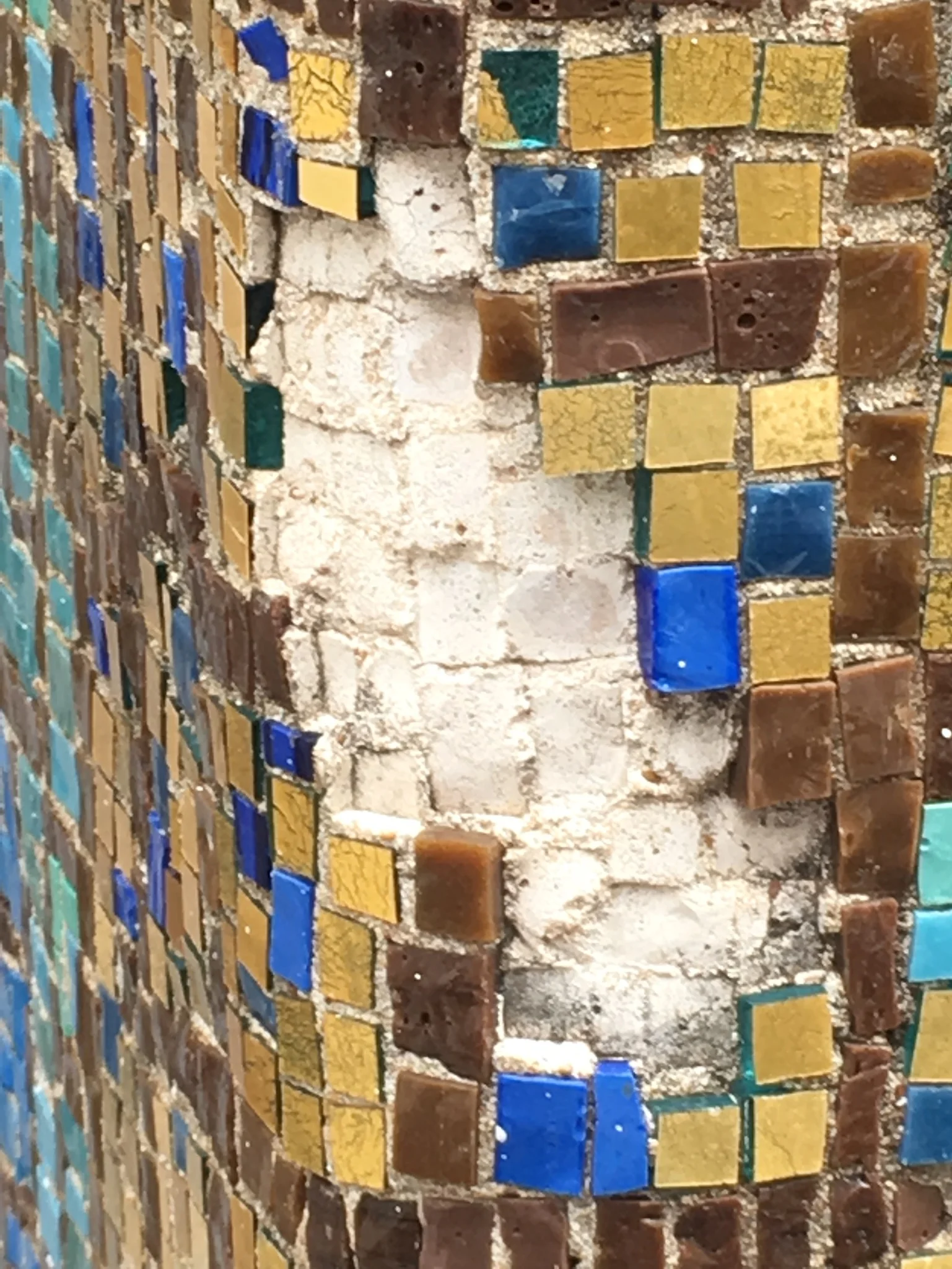Once we carefully documented the areas to be removed, cleaned the tiles and received replacements from the stock at Miotto Mosaics Studios in NY, we were ready to rebuild.
Using both printed "before" photos of the mosaic and our iPads and iPhones (for easy enlargement of the details), we were able to identify original tiles and put them right back next to their neighbors. A classic example of ancient craft and modern technology working together.
Photo by Danny Fulgencio.
























